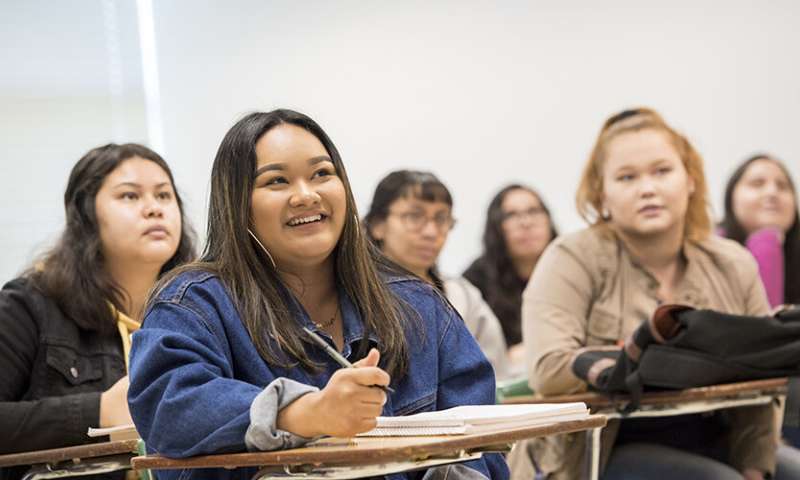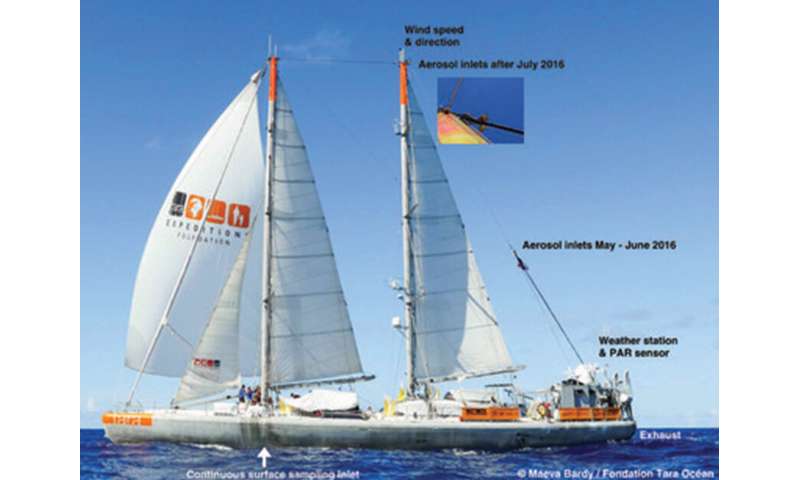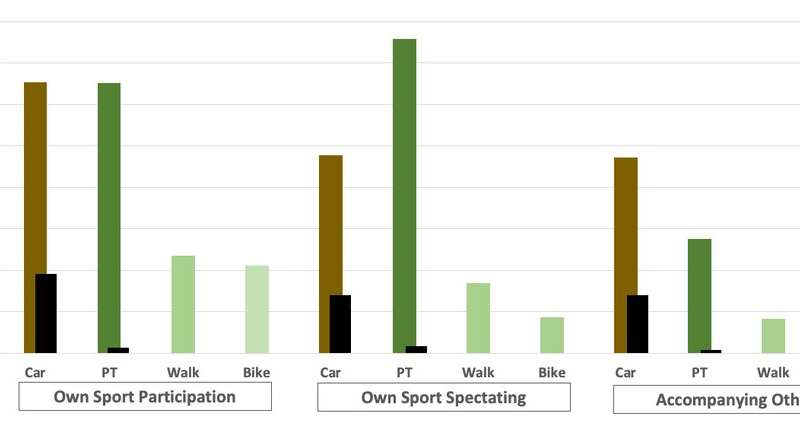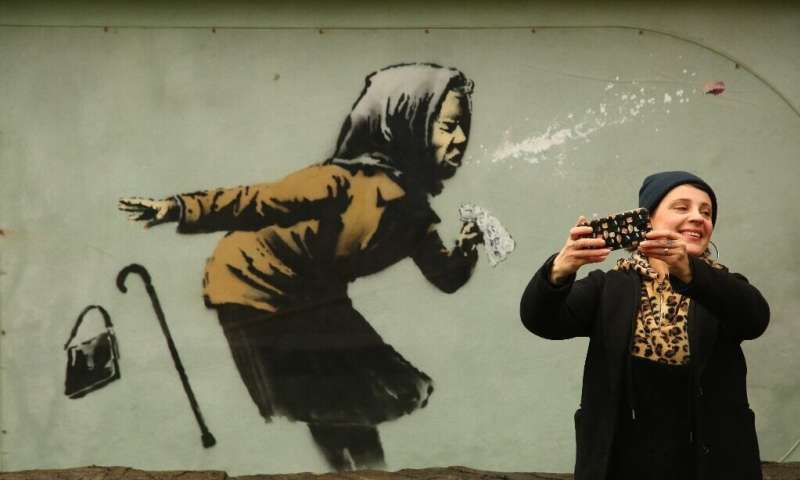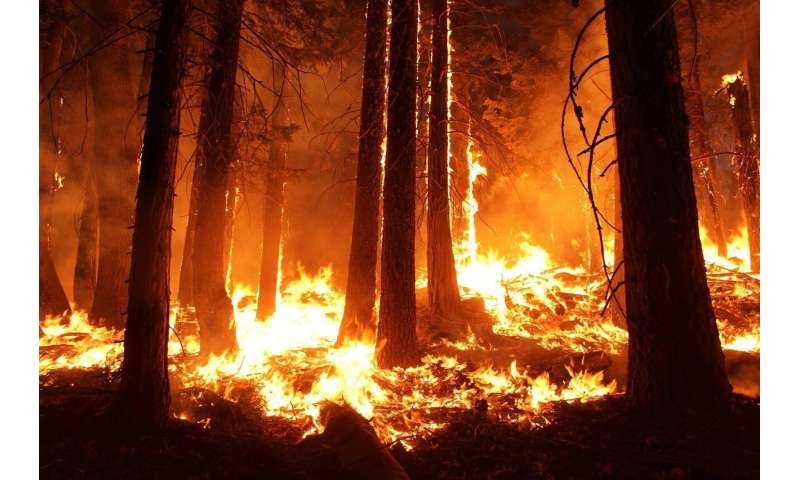
The scene looks like something out of a science fiction movie, or maybe some dystopian TV series.
Six men in yellow biohazard suits clamber in suffocating heat towards a cave in the heart of the Gabonese jungle.
Their quest: to unlock new knowledge on how pathogens like coronavirus leap the species barrier to humans.
In the cave is their goal—a colony of bats.
"Our job is to look for pathogens which could endanger humans and understand how transmission happens between species," explained Gael Maganga, a professor at the University of Franceville.
Bats can be hosts to viruses that do not harm them but can be dangerous to Homo sapiens, often crossing via other animals.
COVID-19 is just the latest microbe believed to have taken the zoonotic path from animals to humans.
It notably follows three other respiratory viruses, MERS in 2012, SARS in 2003 and H5N1 flu in 1997; the haemorrhagic virus Ebola in 1976; and AIDS, which is believed to have crossed over from chimps about a century ago, possibly through hunters who handled infected meat.
Bat cave
Getting to the cave is hard work. The team have to almost wade through thick soil, pieces of bark and russet-coloured leaves that exhale the musky perfume of the forest.
The environment here—hot and humid and filled with natural hazards—is tough for humans, but perfect for viruses.
Bit by bit, the scent of damp earth yields to the smell of bat droppings, which eventually becomes suffocating in the sticky air. Bees and silvery butterflies dance around the heads of the virus hunters, their faces dripping in sweat beneath their goggles.
Above them, the tree tops seem to lose themselves in the sky, and gnarly creepers hang down, as if suspended from the heavens.
The mouth of the cave suddenly rears up ahead, and a stream of bats flies out. A thick white bedding of bat droppings spreads across the ground and the rocks.
Maganga calls on the team to stretch a net across the cave's dark maw and the bats, suddenly sensing the alien presence of humans, start to hunker down inside.
But one of the scientists moves forward, shining his torch inside. Bats fly out and get caught in the net.
Now the real scientific stuff can begin. The team take out sterile swabs and take samples from the bats' mouths and rectums.
These are then carefully stored for transport back to the lab, where they will be analysed for any emerging pathogen.
Species contact
To any who would blame the bats for the catastrophe of coronavirus, the scientists are bluntly dismissive.
Human encroachment on their habitat, they say, has brought the two mammal species into closer, riskier proximity.
"Human behaviour is often the cause of an emerging virus," said Maganga. "Today, with population pressure, intensified farming or hunting, contact between humans and animals is more and more frequent."
Maganga is also co-director of the Emerging Viral Diseases Unit at Franceville's Interdisciplinary Centre for Medical Research (CIRMF).
It hosts one of Africa's two P4 laboratories—ultra-high-risk labs that operate at top levels of security.
A report issued in October by the UN's biodiversity panel IPBES said there were up to 850,000 viruses that exist in animals and may infect humans.
Seventy percent of emerging diseases circulate in animals before jumping to humans, and each year around five new diseases break out among humans, it said.
Pauline Grentzinger, a vet at the Lekedi Nature Park, a biodiversity haven near Franceville, warned against the conventional thinking "that it's humans on one side and animals on the other."
"In health terms, what happens with one (species) has a repercussion on the other. To protect natural fauna is to protect humans," she said.
Hunters not deterred
In Gabon, every outbreak of Ebola has occurred in the Zadie Caves area, which lies close to the border with the Republic of Congo. CIRMF researchers have found samples of Ebola virus among bats, confirming that the flying mammals were the host.
Maganga has also uncovered a number of coronavirus strains circulating among bats, including some that are close to the COVID-19 strain that infects humans.
Despite the obvious risk, hunters still come into the area to hunt for animals—antelopes, gazelles, monkeys and bats.
In April, Gabon imposed a ban on the sale of bats and pangolins, another species deemed to be a potential vector of coronavirus.
But villagers living near the caves say they have yet to see a case of COVID—and for many, poverty seems to trump any danger.
"In one night, I can earn a month's money," said Aristide Roux, a 43-year-old hunter, showing the body of a gazelle on a tree stump by the side of the road.
Explore further Thai scientists catch bats to trace virus origins
© 2020 AFP



